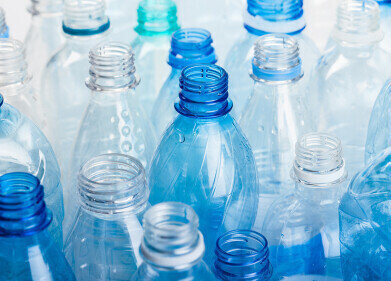Waste Management
Does Paint Contain Microplastics?
Mar 07 2022
When we think of oceanic pollution, we probably bring to mind images of plastic bottles, discarded fishing nets and other detritus floating out at sea. Microplastics, which are tiny pieces of plastic that have either degraded from larger items over time or disintegrated from textiles, rubbers and other substances, often do not figure in our thinking, despite accounting for a significant proportion of plastic sea waste.
Even those among us who are aware of microplastic pollution and understand the implications of our exposure to this omnipresent problem are likely to associate the term with tyre abrasion, washing machine run-off or cosmetic products. Paint, and the microplastic pollution for which it is responsible, rarely comes into question. As such, it may shock you to discover that not only does paint contain microplastics, but that it’s actually responsible for a higher concentration of ocean microplastic pollution than any other source.
Plastic in your paint
Plastic polymers such as alkyls, epoxies, polyacrylates, polyesters, polystyrenes and polyurethanes are key ingredients in a variety of different types of paint. Over time, these tiny pollutants can become dislodged from the surface they adorn and contaminate the environment around them. Despite being widespread around the world, these types of pollutants are often neglected when it comes to auditing and reviewing the types of microplastics which make it to our seas and oceans.
However, a new study from the Swiss research group Environmental Action has revealed that paint microplastics actually constitute the most abundant form of oceanic microplastic pollution. According to EA’s calculations, some 1.9 million tonnes of paint find their way into our seas, oceans and waterways each year, which is equivalent to 58% of all waterborne microplastics. That means that tyre dust and textile fibres are not, as previously assumed, the biggest contributors to this issue.
A variety of sources
The research used a variety of sophisticated analytical techniques, including the application of machine learning to microplastics, to quantify the volume of paint particles in the sea and trace them back to their source. According to their findings, over a third of the leakage came about as a result of improper waste disposal processes, while 18% was attributed to degradation and maintenance of offshore rigs, commercial tankers and other seabound structures and vessels.
Whatever the source, the findings conclude that the volume of microplastics derived from paint in our oceans is roughly triple that which previous studies had assumed. “The intention of this research is not to criticise paint, but to increase the level of knowledge and awareness of the issue, so as to pave the way towards a better-managed paint system where paint can deliver its full value without compromising the health of our environment,” explained Dr Julien Boucher, found of EA.
Events
May 05 2024 Seville, Spain
May 13 2024 Munich, Germany
May 23 2024 Beijing, China
May 23 2024 Beijing, China
Jun 10 2024 Algiers, Algeria













